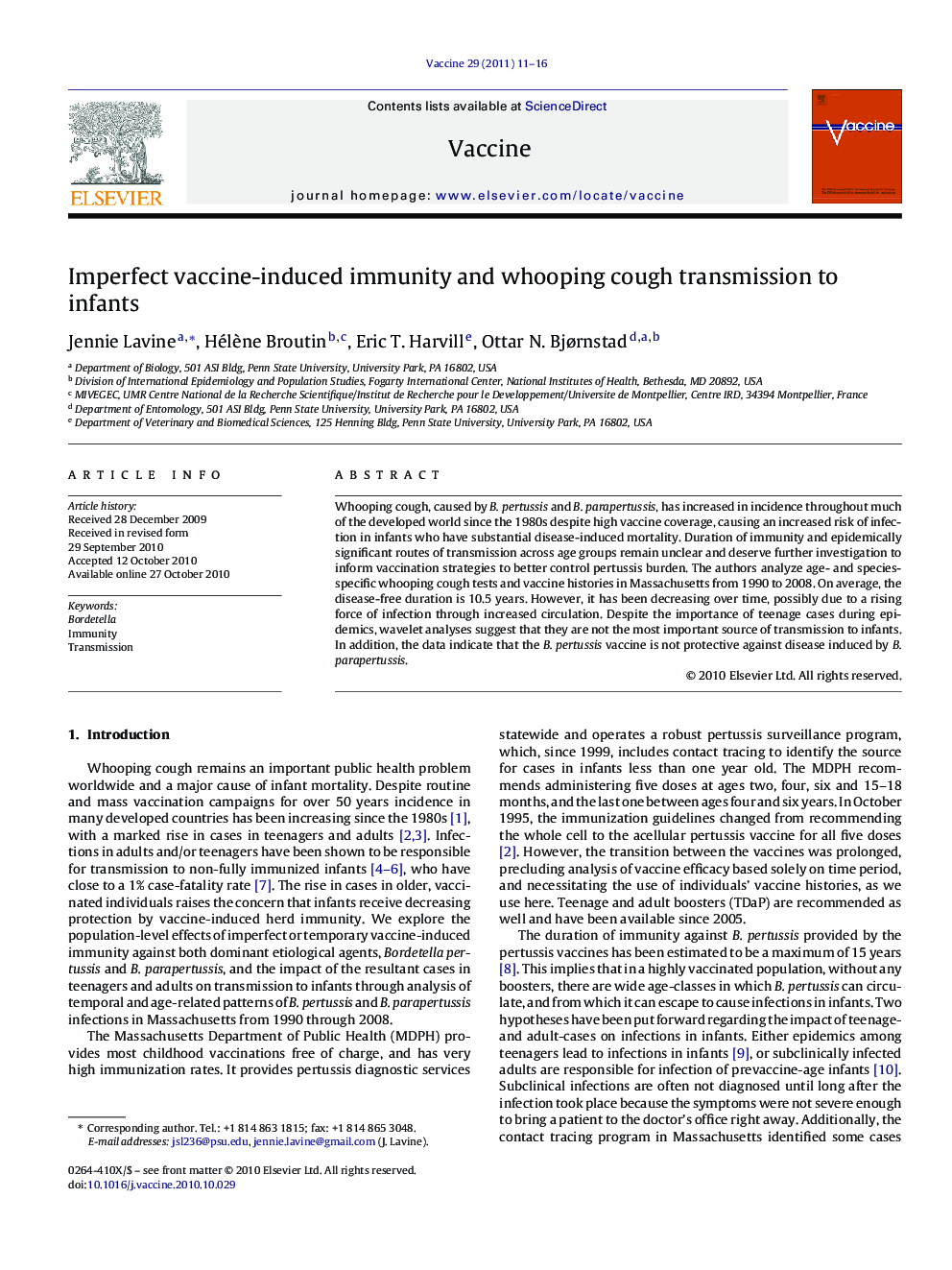| Article ID | Journal | Published Year | Pages | File Type |
|---|---|---|---|---|
| 2404443 | Vaccine | 2010 | 6 Pages |
Whooping cough, caused by B. pertussis and B. parapertussis, has increased in incidence throughout much of the developed world since the 1980s despite high vaccine coverage, causing an increased risk of infection in infants who have substantial disease-induced mortality. Duration of immunity and epidemically significant routes of transmission across age groups remain unclear and deserve further investigation to inform vaccination strategies to better control pertussis burden. The authors analyze age- and species-specific whooping cough tests and vaccine histories in Massachusetts from 1990 to 2008. On average, the disease-free duration is 10.5 years. However, it has been decreasing over time, possibly due to a rising force of infection through increased circulation. Despite the importance of teenage cases during epidemics, wavelet analyses suggest that they are not the most important source of transmission to infants. In addition, the data indicate that the B. pertussis vaccine is not protective against disease induced by B. parapertussis.
